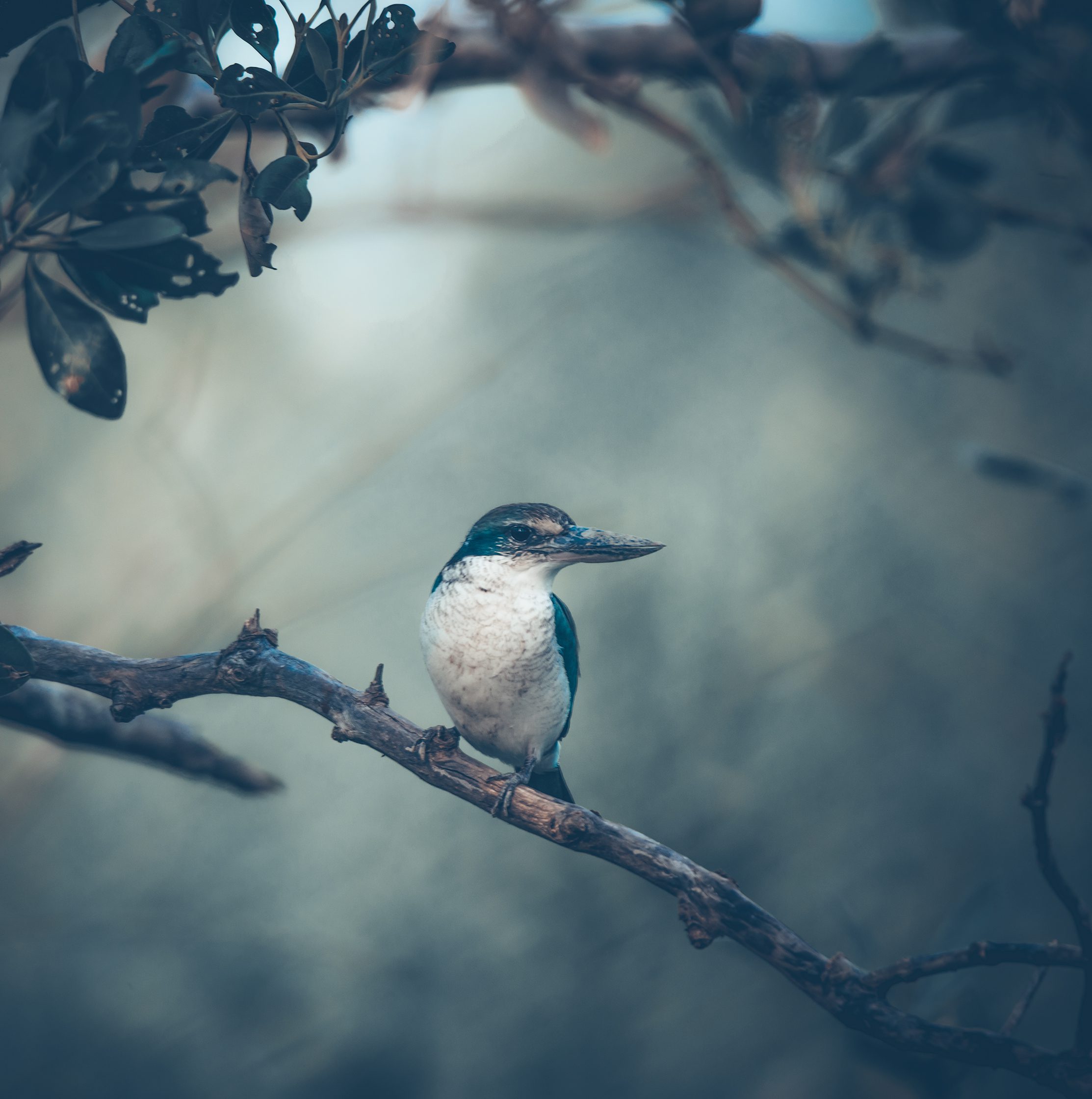

Bhitarkanika National Park is spread over 145 sq. km. in Odisha. The area is also been designated as second Ramsar site of the State after the Chilika Lake. It is surrounded by Bhitarkanika Wildlife Sanctuary, which spread over 672 sq. km. Gahirmatha Beach and Marine Sanctuary are to the east, separating swamp region and mangroves from the Bay of Bengal. The national park and wildlife sanctuary is inundated by the rivers Brahmani, Baitarani, Dhamra, Pathsala. It hosts many mangrove species, and is the second largest mangrove ecosystem in India. Bhitarkanika has a very rich historical and cultural past. It used to be the hunting grounds of the erstwhile King of Kanika. The hunting towers and artificial watering holes can be seen at many places, including Bhitarkanika Trail and at Dangmal. It is also the home of medieval Hindu temples, found dotted throughout the sanctuary, yet the major attraction remains the wildlife.
Mangroves are salt-tolerant, complex, and dynamic plants that occur in tropical and subtropical intertidal regions. They are adapted to rising and lowering of tides throughout the day, with roots designed like “stilts”, enabling the plant and its leaves to photosynthesise adequately without being submerged. They have also evolved to tolerate fluctuating salinity levels throughout the day’s tides. Bhitarkanika is one such location of rich, vibrant mangrove ecosystem, lying in the estuarine region of Brahmani. The landscape contains varied environments, including mangrove swamps, rivers, creeks, estuaries, marshes, inland floodplains, forested beaches, and mudflats.
It is a well-known place to observe the giant saltwater crocodile, along with other semi-aquatic reptiles like the Asian Water Monitor, and numerous snakes. Spotted Deer and Wild Boar are abundant in the park and can be spotted at all the major sites. Various species of kingfishers are found here and can be found along the many creeks and riverine systems within the park. The boat ride from Khola to Dangmal is quite popular, being that Khola is one of the gateways into the park. This route travels along a man-made creek as it passes through dense mangrove forests, providing a glimpse into the estuarine ecosystem and its wealth of fauna. The best time to travel through this creek is early morning or before sunset. The forest is also home to other mammals like Fishing Cats, Jungle Cats, Leopard Cats, Rhesus Monkeys, Jackals, Langurs, Smooth-coated Otters, Sambar Deer, Foxes, Wolves. Avifauna includes 320 species, including various kingfisher species. Birds such as Asian open bill, cormorants, darters, black ibis, and egrets are frequently seen in the park. Every year close to 120,000 winter visitors from abroad for wintering and 80,000 resident birds from different parts of India arrive for nesting during the monsoon season. Another sorted after bird is the Mangrove Pitta.
Accessibility by Train: Bhubaneshwar: 170 Kms.
Accessibility by Air: Bhubaneshwar: 170 Kms.
Payment Policy:
– 50% at the time of booking. Booking will be confirmed up on receipt of this 50% nonrefundable deposit
– 50% balance 60 days prior to the date of travel
Cancellation Policy:
– If cancelled prior to 30 days of travel date – 50% (50% refund)
– If cancelled less than 20 days of travel date – 100% (0% refund)
Day 1: 23/1/25:
Bhubaneshwar- Bhitarkanika
Arrival at Bhubaneshwar. Our representative would meet you at the Airport on your arrival. You would straight away proceed to Bhitarkanika by AC Car (3.3 HRS).
On arrival at Bhitarkanika. Check-in in into the homestay.
Evening boat safari. We try to spot kingfishers, waders and other water birds. On the way back we try to spot the Leopard Cat.
Dinner and overnight stay.
Day 2: 24/1/25:
Bhitarkanika
With an early wake up call, get set for a birding session in Rickshaws. We drive and spot woodpeckers, prinia, babblers.
Breakfast.
Step out again for birding.
Lunch.
Post Lunch proceed for evening safari to spot fishing cat.
Dinner and overnight at stay.
Day 3: 25/1/25:
Bhitarkanika
With an early wake up call, get set for the boat safari experience. Have a great morning spotting water birds. On your return to campsite have breakfast, relax refresh.
Lunch.
Post Lunch proceed for another boat safari, and return to the campsite just after sunset.
Dinner and overnight at stay.
Day 4: 26/1/25:
Bhitarkanika-Bhubaneshwar
Breakfast.
Departure for Bhubaneshwar.
Tour ends.
